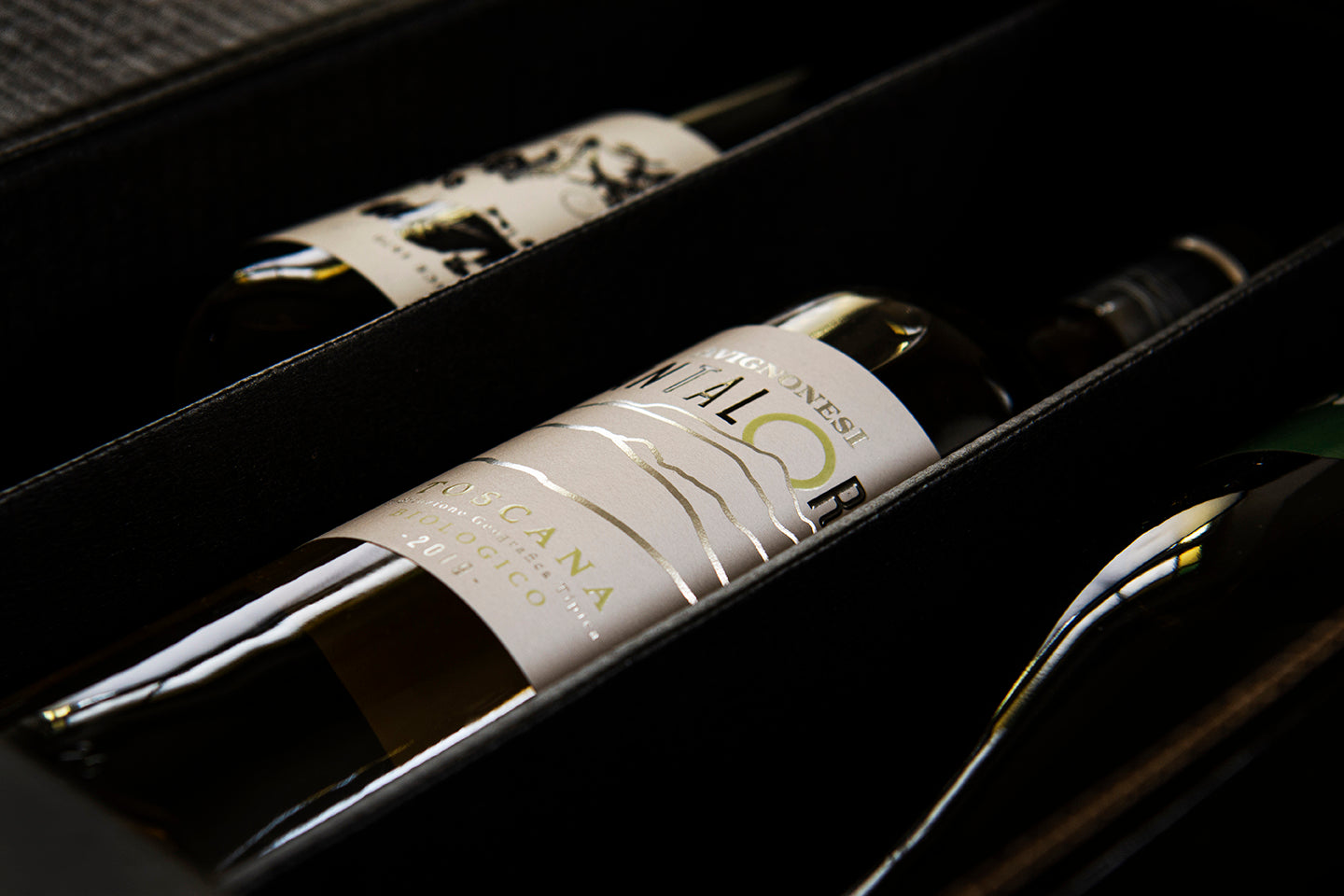It won’t surprise you to learn that, as one of the UK’s leading indie wine merchants, Dry January is not our favourite lifestyle trend. However, we’re also guilty of over-indulging during the festive season ourselves and, come January, feel the need to press the reset button.
How then to reconcile the enjoyment of drinking all this delicious wine we’ve meticulously sourced, with the need to switch back into a healthier lifestyle? The simple answer is to cut down consumption, using the opportunity to invest more in every bottle, buying wines to sip slowly and ruminate on at your leisure. Accessorize the look with a smoking jacket, roaring fire, and classic leatherbound novel if possible!
We believe that mindfully engaging your senses and searching for language to describe wines is a great mental workout. So, this January why not share one really interesting bottle of wine a week (see our suggestions below), and maybe even build a delicious meal around each to give your cooking skills a workout too?
If your New Year’s resolution is to learn something new, why not enrol on one of our WSET wine courses here in Cornwall? Find out more here.
Tenuta del Melo Gavi DOCG, Piedmont, Italy
With no use of chemicals in the vineyard or the winery, this light, fresh style feels the perfect thing to brighten up January.
A lovely Gavi with more complexity than most, this is made with tender loving care using grapes hand-selected from a biodynamic vineyard in a beautiful corner of Northern Italy. The grapes are then destemmed and delicately pressed, and the wine is left on its lees for three months to impart flavour and a little body.
Grown in harmony with nature, the vines sink their roots deep into the marly and minerally soil, drawing out a freshness and verve which the native Cortese grape amplifies perfectly.
What to cook? Dig out that homemade pasta recipe and make your own crab ravioli – it’ll be worth the effort when enjoyed with a glass of this gorgeous Gavi.
Huxelrebe Auslese, Hanewald-Schwerdt, Pfalz, Germany
This delicious, sweet wine is made by cousins Thomas and Stephan - considered two of the most talented young winemakers in Germany right now.
Rich and juicy, with a low alcohol content (just 8.5%), this is made from the native German grape Huxelrebe. Every sip brings fresh nuances of flavour, from exotic fruits to honey and ginger, as layer by layer this wine reveals why ‘noble rot’ is given such lofty status.
It’s well worth reading more on the process, which is considered the ultimate method of making sweet wines. In a nutshell, in specific conditions a mould called botrytis develops which naturally intensifies the flavours and sugars of the grapes, leading to the creation of famous dessert wines such as Tokaji and Sauternes.
What to cook? A classic dessert like Creme brulée, with a thick crunchy caramelised top, would be perfect with this.

Sao Expressiu, Mas Blanch i Jove – Catalunya, Spain
As you sip this complex, elegant and mature red (a blend of Grenache, Cabernet Sauvignon and Tempranillo) dream of visiting the beautiful winery where it’s made. The area, Les Garrigues, is about 700 metres above sea level and the vineyard is surrounded by forests, olive trees and vineyards, about an hour and a half’s drive inland from Barcelona.
More than 99% off the energy used at this vineyard and winery is generated by solar panels onsite, and the set-up allows for excess energy to be stored in batteries, making Mas Blanch I Jove a pioneer in sustainable winemaking.
As well as sustainability, art is high on the agenda here. There’s an exhibition hall as well as large installation pieces in The Artists’ Vineyard, and an annual programme of music, theatre, poetry and more. Guests can rent a large house, truly immersing themselves in this project which combines wine, art, and the natural environment.
What to cook? Treat yourself to a prime cut of grass-fed beef, free-range local duck, or wild venison to go with this wine, which features forest fruits and sweet spices on the palate, with velvety tannins.

Monviert Martagona Schioppettino, Friuli Venezia Giulia, Italy
This Northern Italian red is bright and crunchy, with intense aromas of redcurrant, cherry, fresh plum, raspberry, and blackberry, with spicy notes of white pepper, cinnamon, walnut husk, and vanilla.
The Schioppettino grape variety is native to this region of Northeast Italy. It has pronounced acidity, prefers cooler temperatures, and is known to make wines which are medium bodied and aromatic (violets and red berries) and spicy on the palate (peppery and earthy).
At one point less than 100 Schioppettino vines survived, and it was effectively removed from the winemaker’s lexicon. Then, in the 1970s, a winemaker called Rapuzzi fought to reestablish Schioppettino and other native Friuli grapes, which had been replaced over time by international varieties such as Merlot and Cabernet Sauvignon. If you’re interested in native grape varieties, you’ll never get bored – there’s so many fascinating ones to discover with interesting connections that crisscross the globe!
What to cook? Still got that homemade pasta recipe handy? This goes perfectly with so many traditional Italian meaty pasta dishes, but we’d opt for a classic beef brisket ragu finished with milk and served with aged Parmesan. Delicious!



